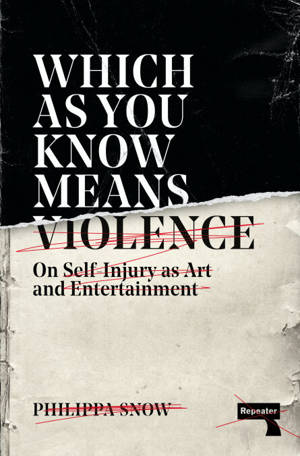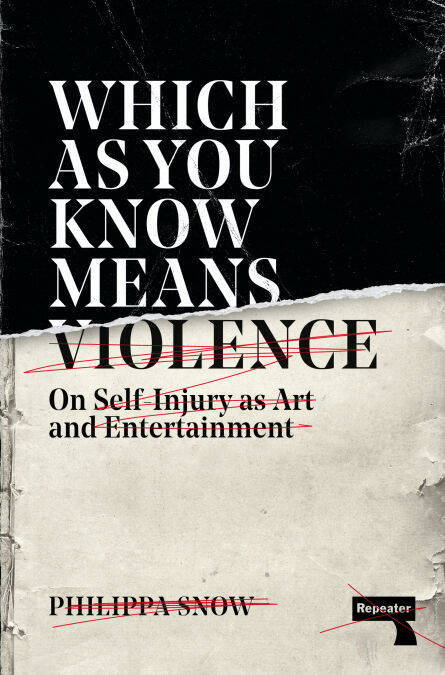
Je cadeautjes zeker op tijd in huis hebben voor de feestdagen? Kom langs in onze winkels en vind het perfecte geschenk!
- Afhalen na 1 uur in een winkel met voorraad
- Gratis thuislevering in België vanaf € 30
- Ruim aanbod met 7 miljoen producten
Je cadeautjes zeker op tijd in huis hebben voor de feestdagen? Kom langs in onze winkels en vind het perfecte geschenk!
- Afhalen na 1 uur in een winkel met voorraad
- Gratis thuislevering in België vanaf € 30
- Ruim aanbod met 7 miljoen producten
Zoeken
Which as You Know Means Violence E-BOOK
On Self-Injury as Art and Entertainment
Philippa Snow
E-book | Engels
€ 8,86
+ 8 punten
Uitvoering
Omschrijving
A blending of art and pop cultural criticism about people who injure themselves for our entertainment or enlightenment.
A few weeks before he died, Hunter S. Thompson left an answerphone message for Jackass' Johnny Knoxville: "I might be coming to Baton Rouge... and if I do I will call you, because I will be looking to have some fun, which as you know usually means violence." Fun does not, of course, mean violence for most people. Those who choose to make a hobby, a career or an art practice out of injury are wired differently — subject to unusual motivations, and quite often powered by an ardent death-drive.
In Which as You Know Means Violence, writer and art critic Philippa Snow analyses the subject of pain, injury and sadomasochism in performance, from the more rarefied context of contemporary art to the more lowbrow realm of pranksters, stuntmen and stuntwomen, and uncategorisable, danger-loving YouTube freaks.
In a world where violence — of the market, of climate change, of capitalism — is part of our everyday lives, Which as You Know Means Violence focuses on those who enact violence on themselves, for art or entertainment, and analyses the role that violence plays in twenty-first century culture.
A few weeks before he died, Hunter S. Thompson left an answerphone message for Jackass' Johnny Knoxville: "I might be coming to Baton Rouge... and if I do I will call you, because I will be looking to have some fun, which as you know usually means violence." Fun does not, of course, mean violence for most people. Those who choose to make a hobby, a career or an art practice out of injury are wired differently — subject to unusual motivations, and quite often powered by an ardent death-drive.
In Which as You Know Means Violence, writer and art critic Philippa Snow analyses the subject of pain, injury and sadomasochism in performance, from the more rarefied context of contemporary art to the more lowbrow realm of pranksters, stuntmen and stuntwomen, and uncategorisable, danger-loving YouTube freaks.
In a world where violence — of the market, of climate change, of capitalism — is part of our everyday lives, Which as You Know Means Violence focuses on those who enact violence on themselves, for art or entertainment, and analyses the role that violence plays in twenty-first century culture.
Specificaties
Betrokkenen
- Auteur(s):
- Uitgeverij:
Inhoud
- Aantal bladzijden:
- 128
- Taal:
- Engels
Eigenschappen
- Productcode (EAN):
- 9781914420825
- Verschijningsdatum:
- 12/09/2022
- Uitvoering:
- E-book
- Beveiligd met:
- Adobe DRM
- Formaat:
- ePub

Alleen bij Standaard Boekhandel
+ 8 punten op je klantenkaart van Standaard Boekhandel
Beoordelingen
We publiceren alleen reviews die voldoen aan de voorwaarden voor reviews. Bekijk onze voorwaarden voor reviews.









